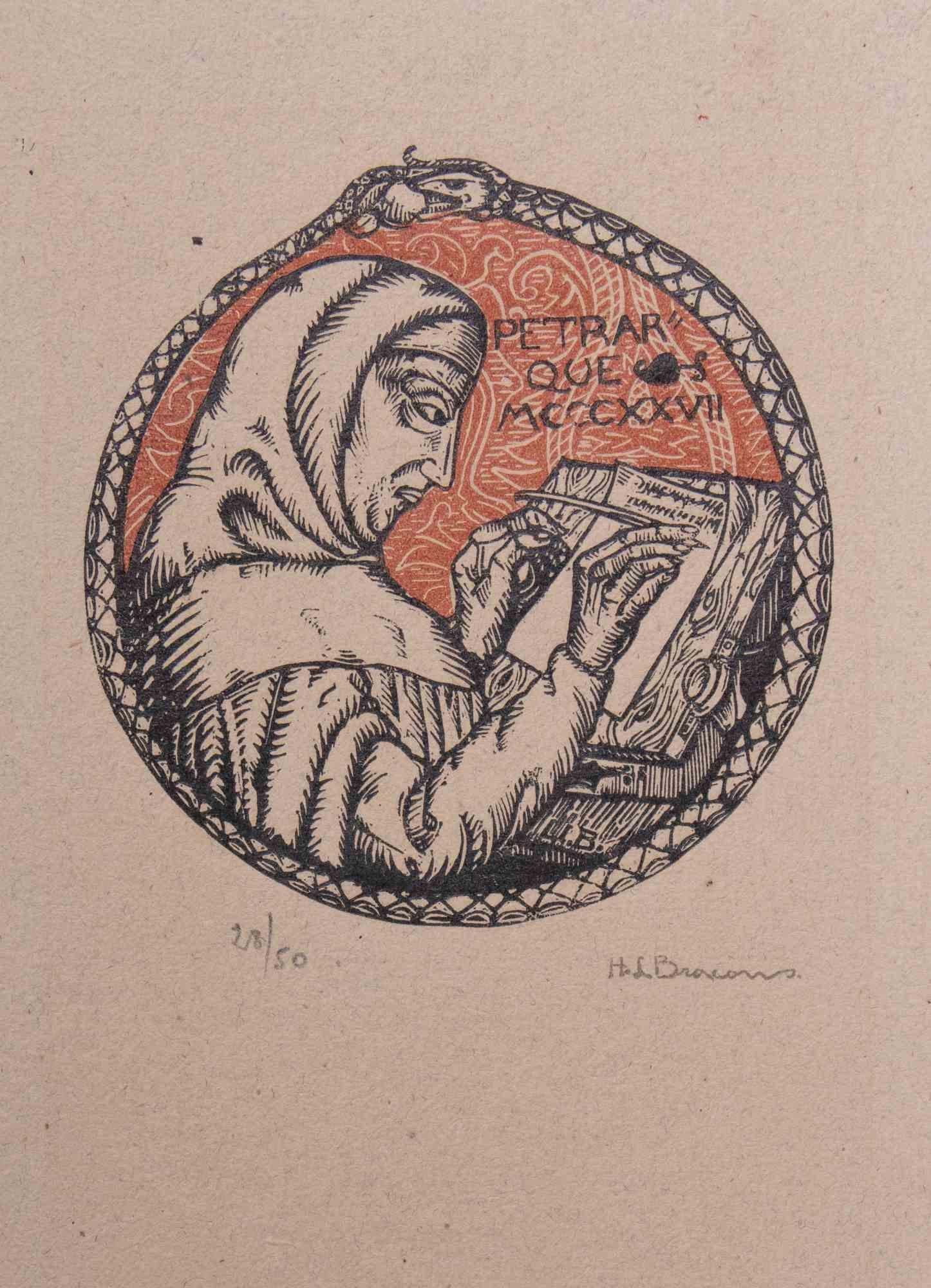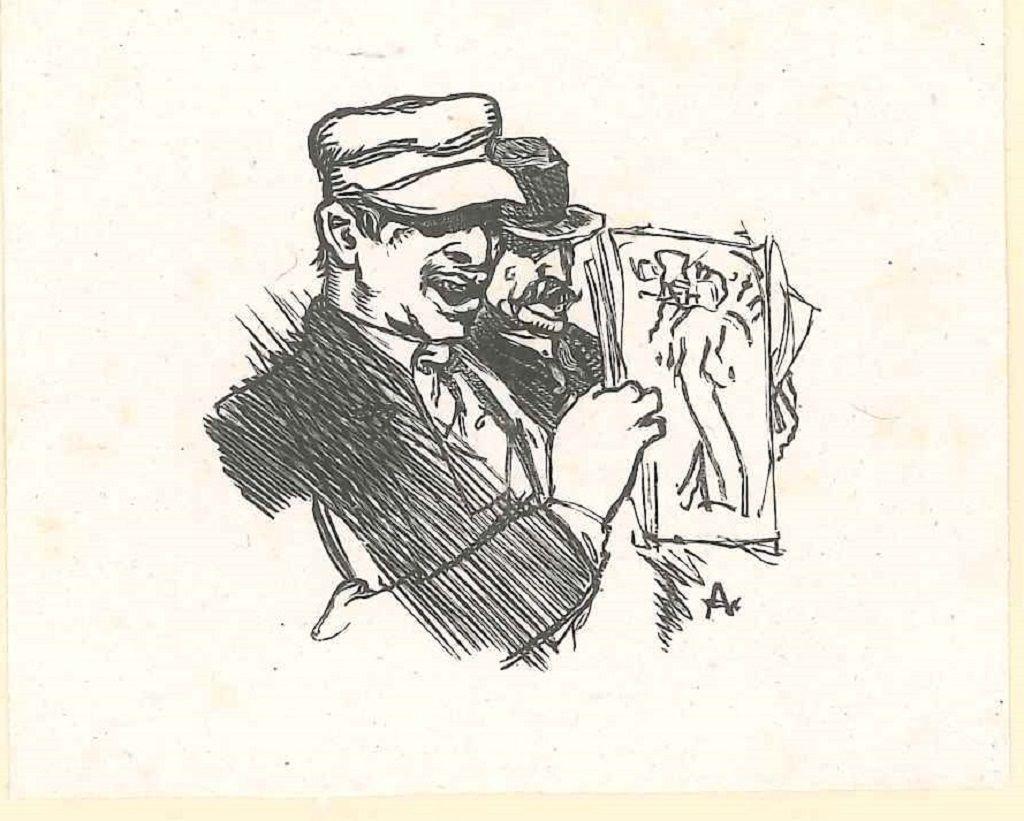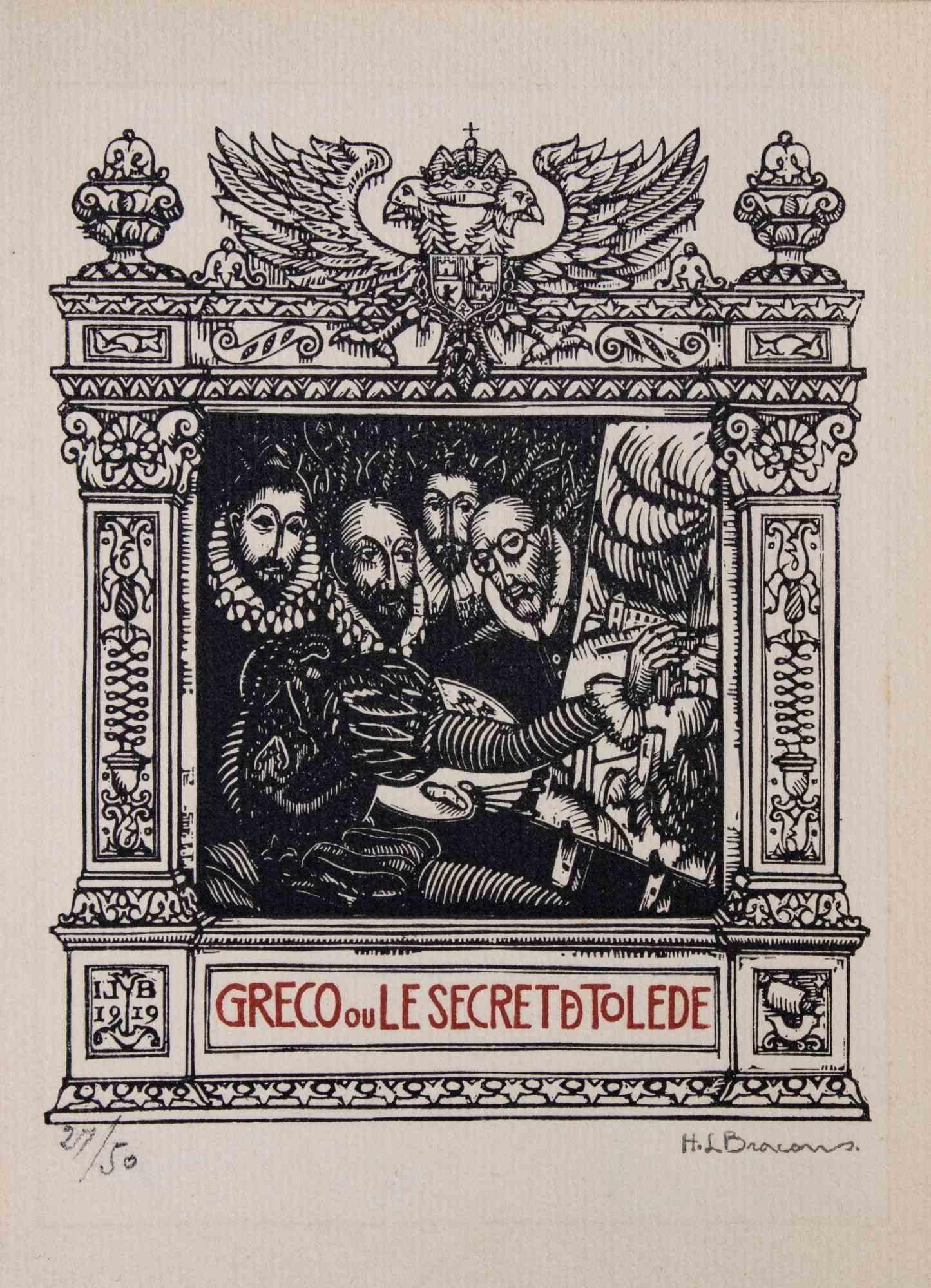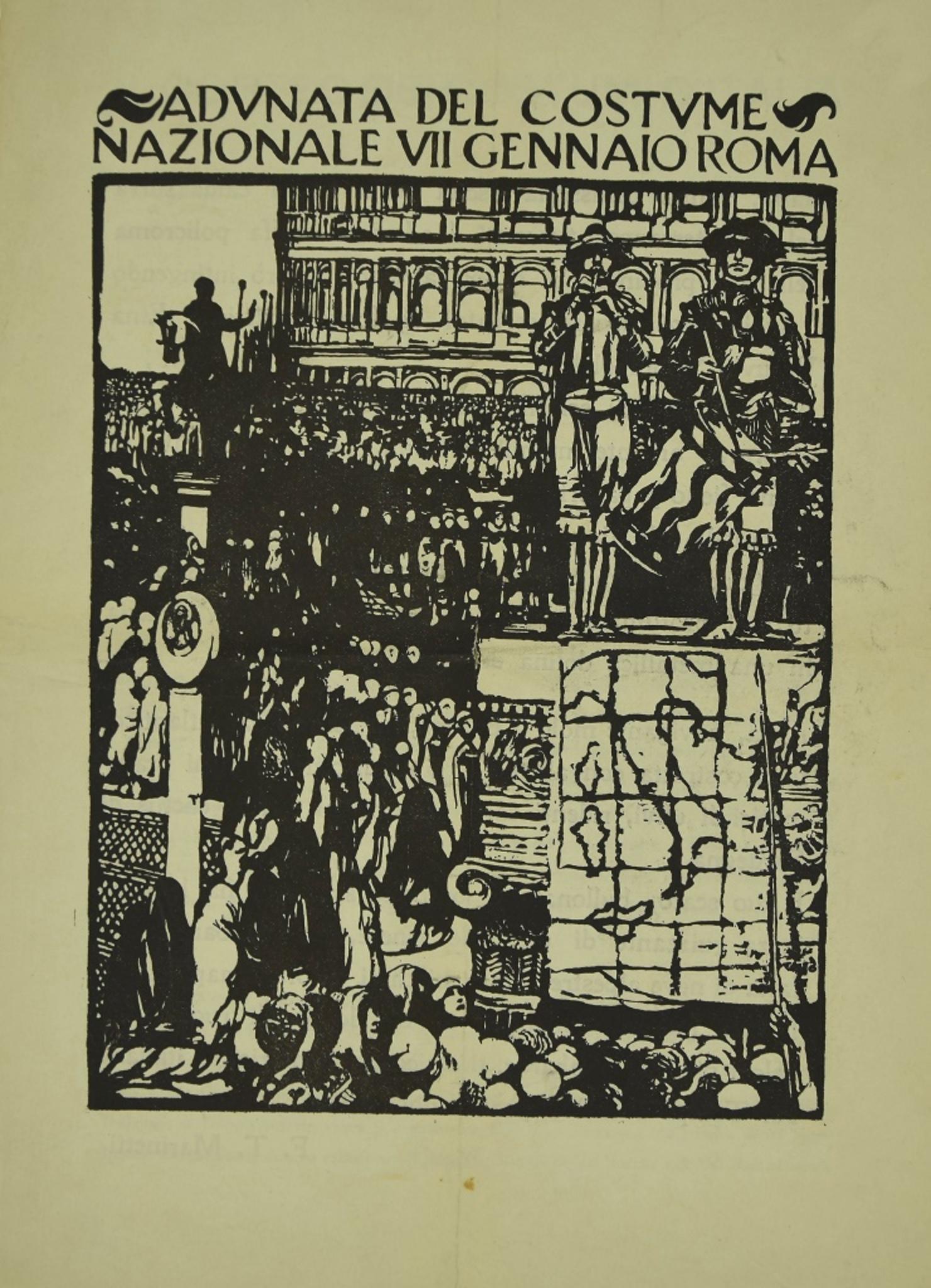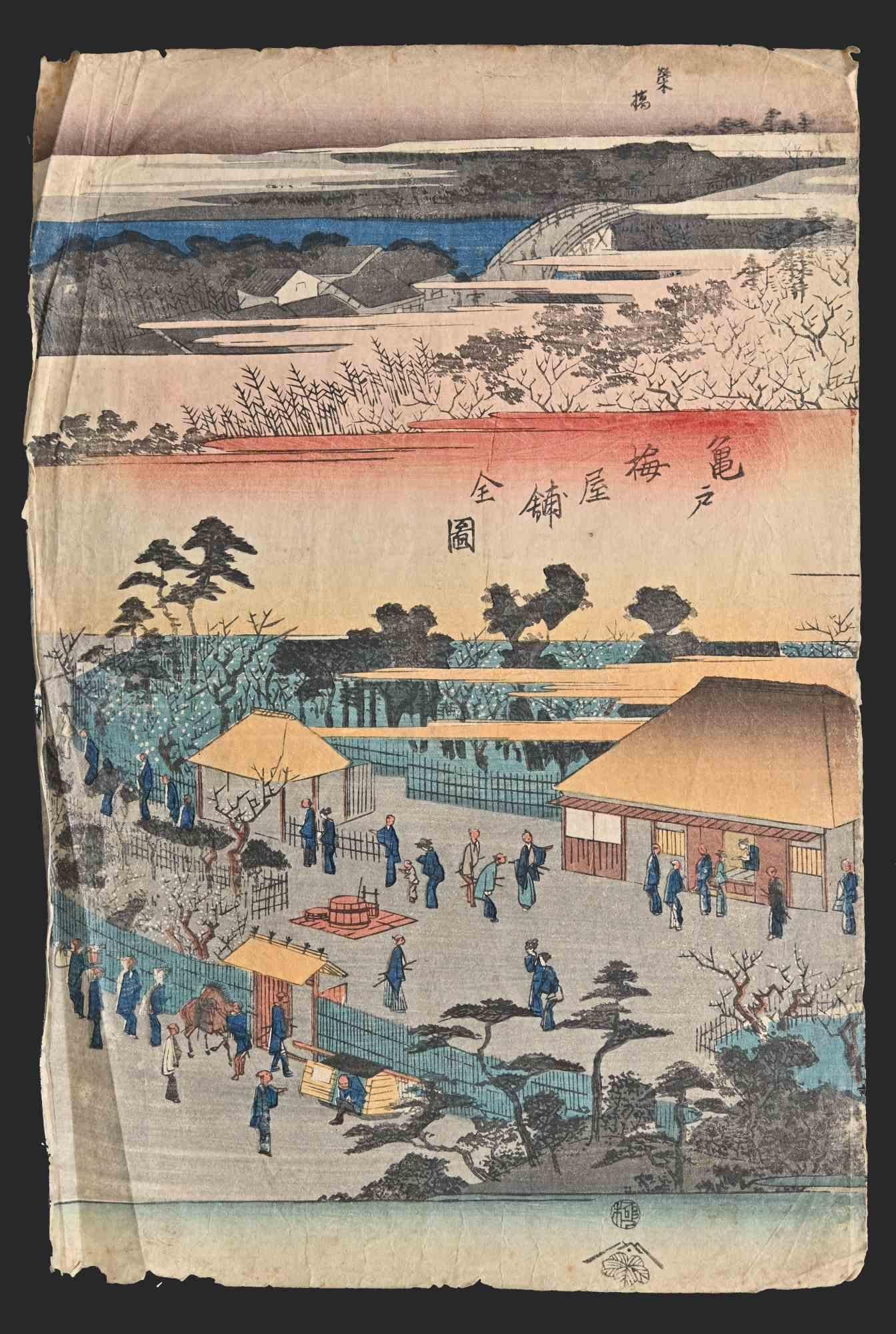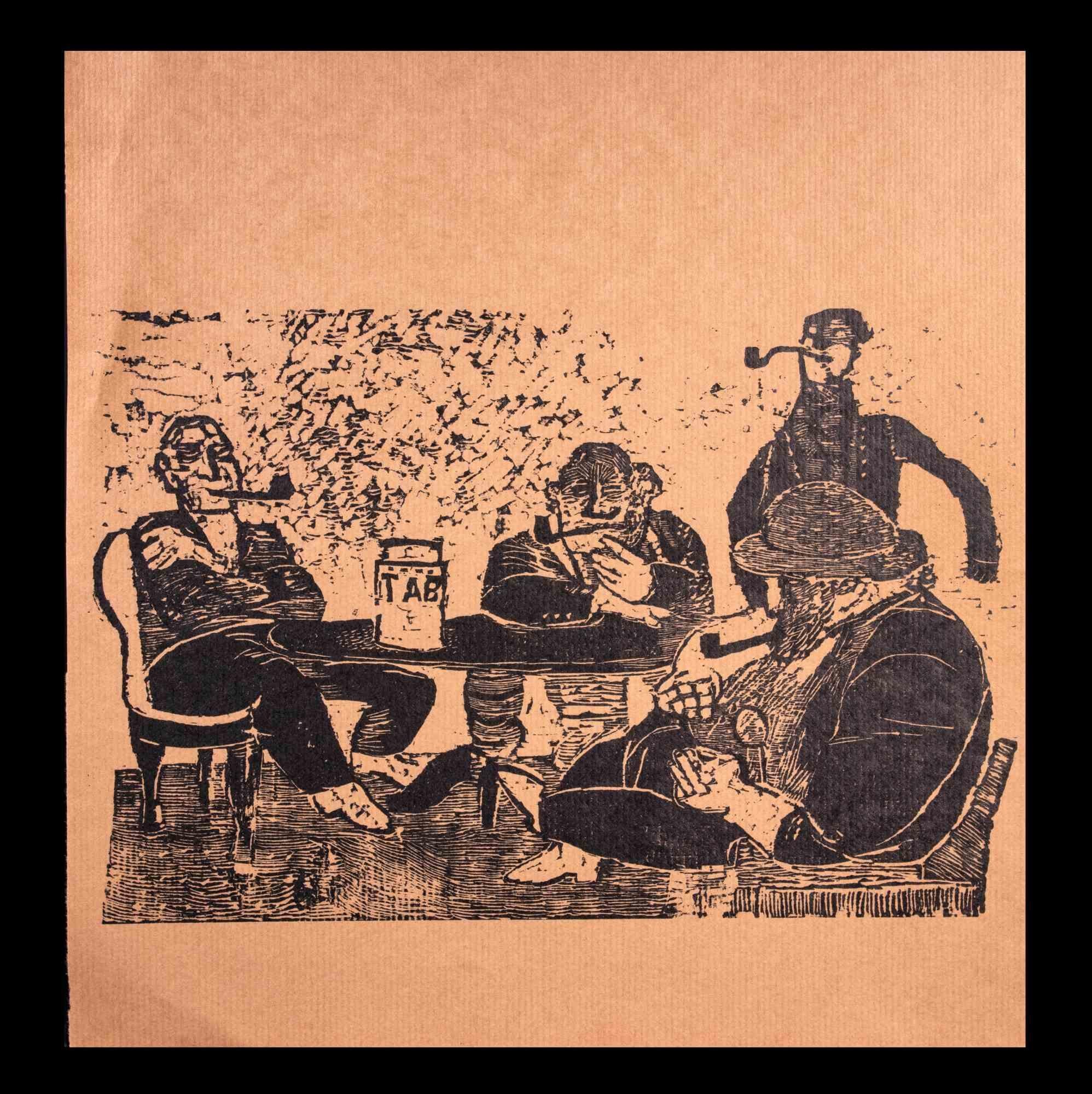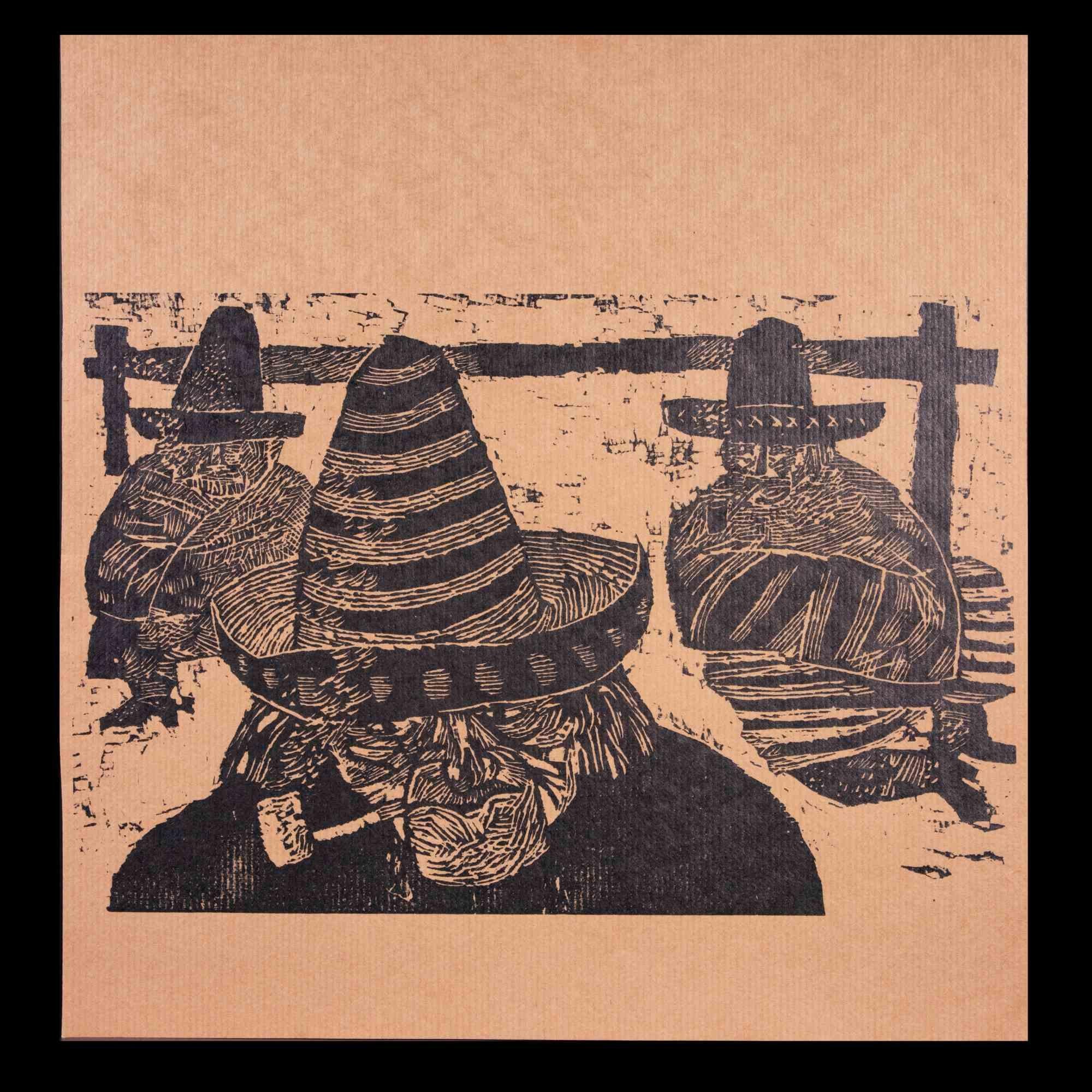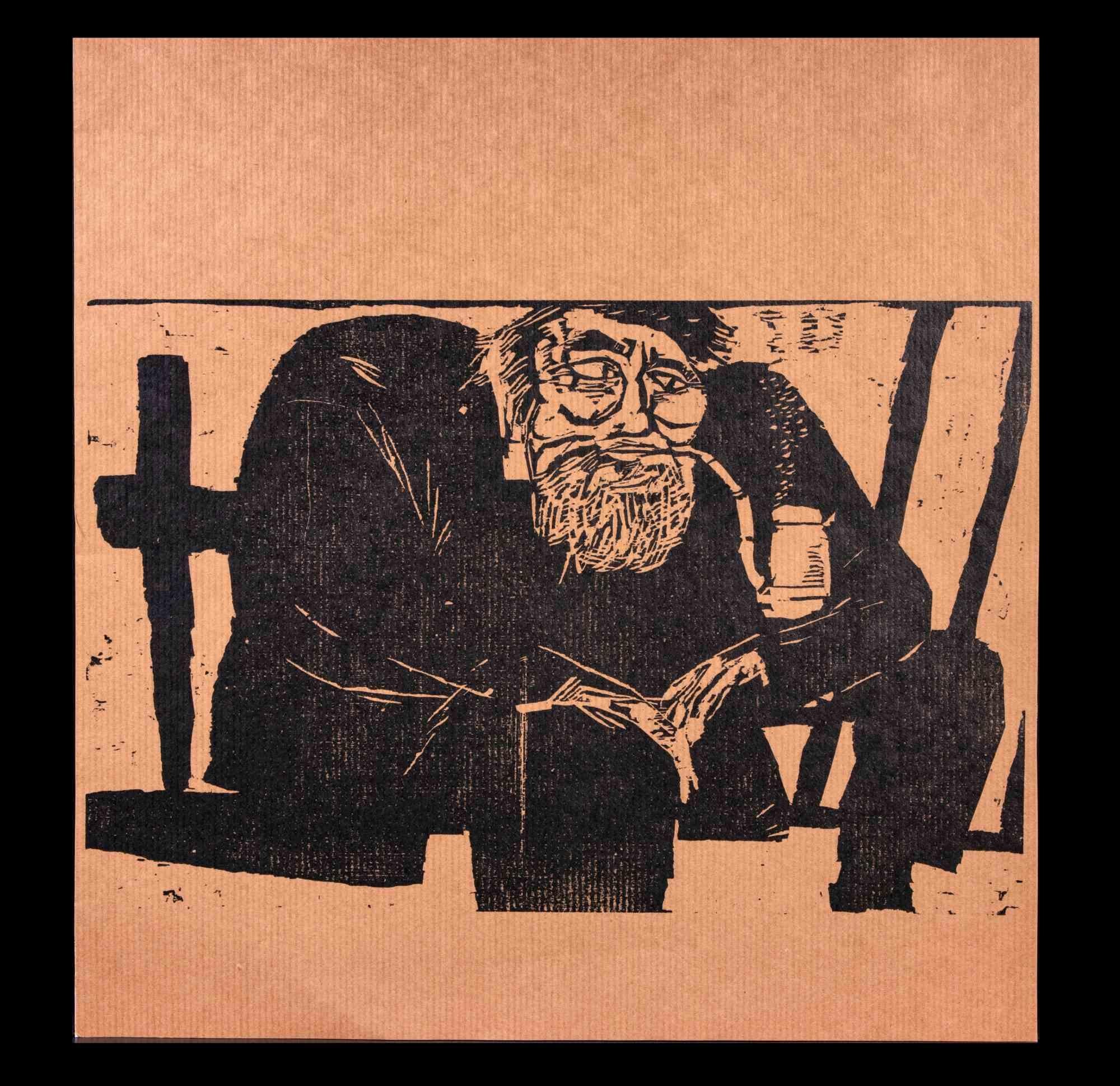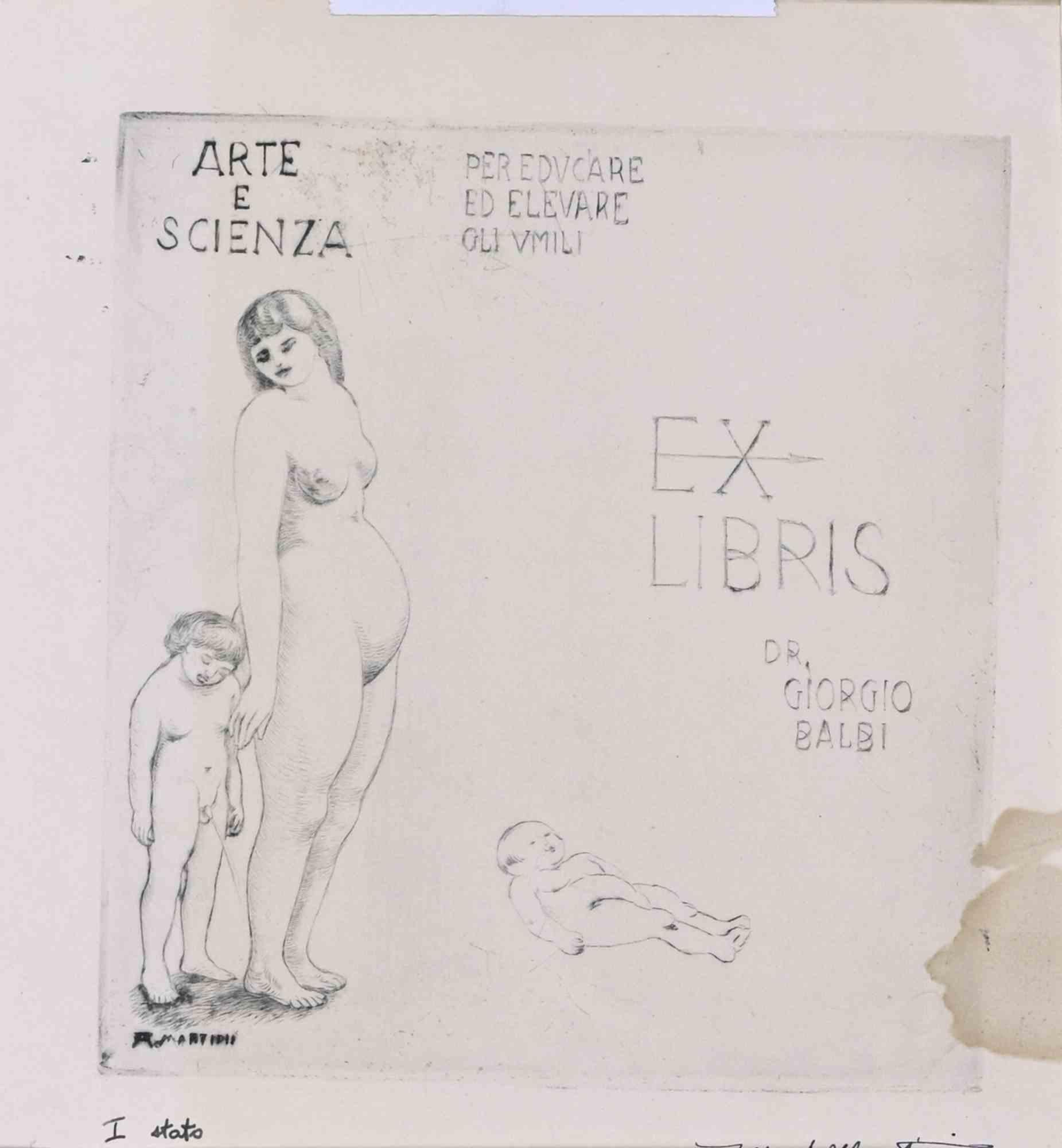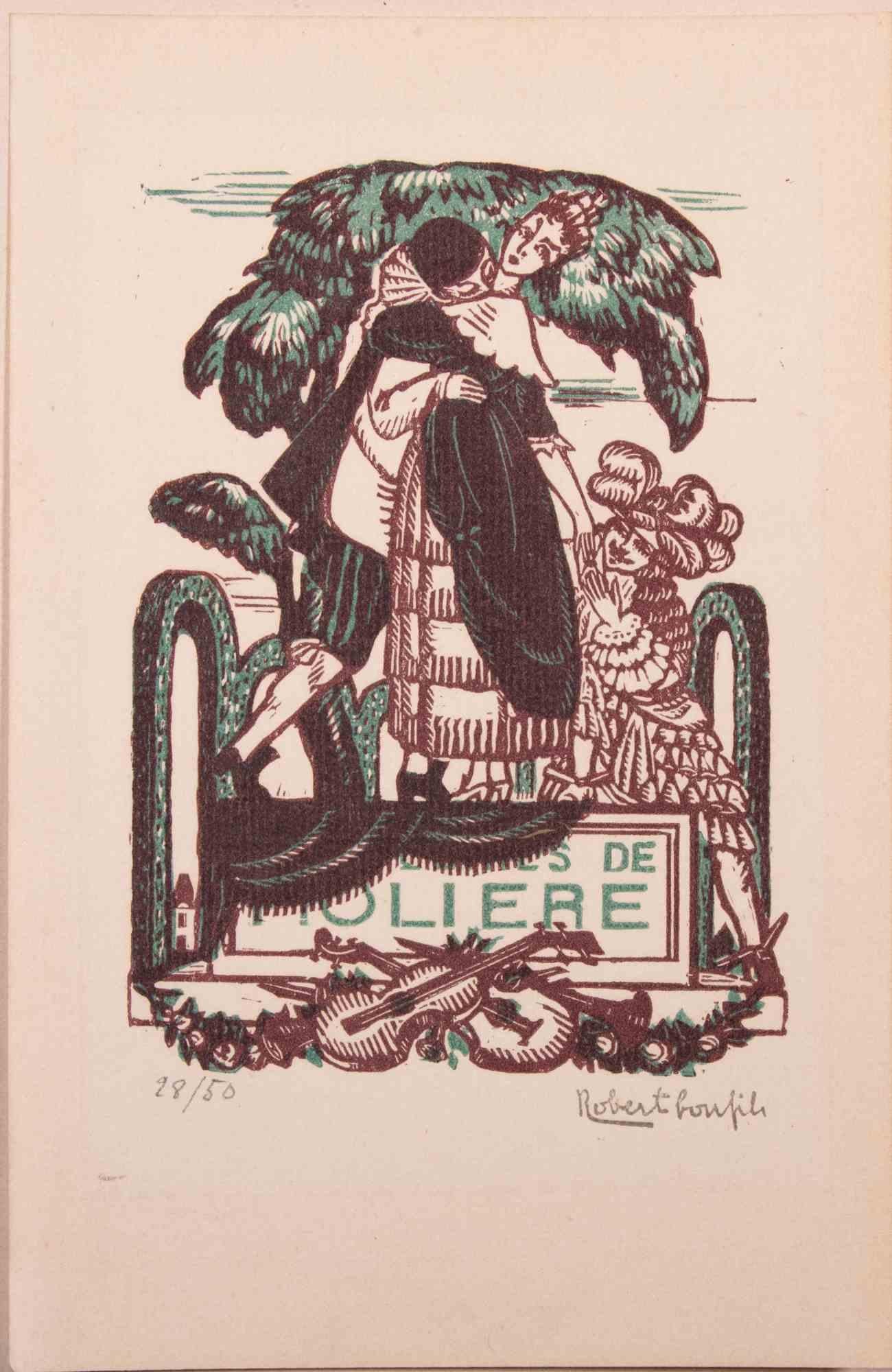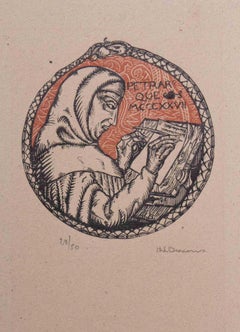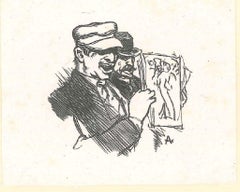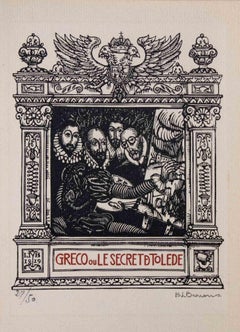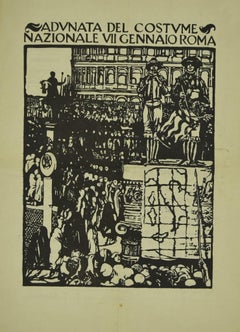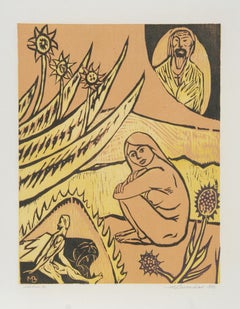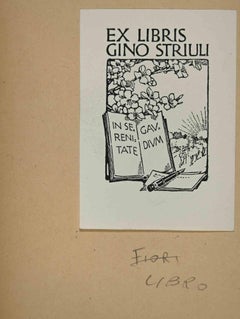
Ex-Libris - Libris Gino Striuli - woodcut - Mid 20th Century
View Similar Items
Want more images or videos?
Request additional images or videos from the seller
1 of 2
UnknownEx-Libris - Libris Gino Striuli - woodcut - Mid 20th CenturyMid 20th Century
Mid 20th Century
About the Item
- Creation Year:Mid 20th Century
- Dimensions:Height: 3.55 in (9 cm)Width: 2.76 in (7 cm)Depth: 0.04 in (1 mm)
- Medium:
- Movement & Style:
- Period:
- Framing:Framing Options Available
- Condition:Insurance may be requested by customers as additional service, contact us for more information.
- Gallery Location:Roma, IT
- Reference Number:Seller: T-1437491stDibs: LU650313579752
About the Seller
4.9
Platinum Seller
Premium sellers with a 4.7+ rating and 24-hour response times
1stDibs seller since 2017
7,499 sales on 1stDibs
Typical response time: 2 hours
Authenticity Guarantee
In the unlikely event there’s an issue with an item’s authenticity, contact us within 1 year for a full refund. DetailsMoney-Back Guarantee
If your item is not as described, is damaged in transit, or does not arrive, contact us within 7 days for a full refund. Details24-Hour Cancellation
You have a 24-hour grace period in which to reconsider your purchase, with no questions asked.Vetted Professional Sellers
Our world-class sellers must adhere to strict standards for service and quality, maintaining the integrity of our listings.Price-Match Guarantee
If you find that a seller listed the same item for a lower price elsewhere, we’ll match it.Trusted Global Delivery
Our best-in-class carrier network provides specialized shipping options worldwide, including custom delivery.More From This Seller
View AllPetrarque - Original Woodcut print by Henri Louis Bracons - 1918
Located in Roma, IT
Petrarque is a woodcut print realized by Henri Louis Bracons
Hand-signed on the lower right in pencil. Numbered on the lower left, the edition of 28/50 prints. Passpartout included...
Category
1910s Modern Figurative Prints
Materials
Woodcut
Two Men with an Illustration - Original Woodcut by Auguste Lepère - 19th Century
By Auguste Lepère
Located in Roma, IT
Two Men with an Illustration is an original artwork realized by Auguste Lepère in the second half of the XIX century.
Original xylograph. Artist's proof for the illustration of a wo...
Category
Late 19th Century Modern Figurative Prints
Materials
Woodcut
Greco ou le secret de Tolede -Original Woodcut print by Henri Louis Bracons-1918
Located in Roma, IT
Greco ou le secret de Tolede is a woodcut print realized by Henri Louis Bracons
Hand-signed on the lower right in pencil. Numbered on the lower left, the edition of 27/50 prints. Pa...
Category
1910s Modern Figurative Prints
Materials
Woodcut
Gathering of the Costume - Woodcut by G.A. Sartorio -1938
By Giulio Aristide Sartorio
Located in Roma, IT
Gathering of the Costume is a woodcut print realized by Giulio Aristide Sartorio in 1938.
The album composed of 10 pages, was realized for the Royal wedding of King Umberto of Savoy...
Category
1930s Modern Figurative Prints
Materials
Woodcut
Kameido - Woodblock Print by Utagawa Hiroshige - Mid-19th Century
By Utagawa Hiroshige
Located in Roma, IT
Panoramic View of the Plum Viewing Pavilions of Kameido is an Original Woodcut Print realized by Utagawa Hiroshige.
Not very good condition, but vivid colors.
Utagawa Hiroshige bor...
Category
Mid-19th Century Modern Figurative Prints
Materials
Woodcut
Men Who Smoke the Pipe - Original Woodcut print - Early 20th century
Located in Roma, IT
Men Who Smoke the Pipe is an original woodcut print realized by an unknown artist of early 20th century.
Good condition on a brown cardboard.
No Signature.
Category
Early 20th Century Modern Figurative Prints
Materials
Woodcut
You May Also Like
Opera : A Garden on the Orontes - Original Wooodcut, Handsigned
Located in Paris, IDF
Raphaël DROUART
Homage to Maurice Barrès: Un Jardin sur l'Oronte (A Garden on the Orontes, Opera), 1924
Original woodcut
Handsigned in pencil
Numbered /160
On vellum 32.5 x 25 cm (c...
Category
1920s Modern Figurative Prints
Materials
Woodcut
Rustical Hunter - Original woodcut, Handsigned and Numbered /160 - Ref #L747
By Jean-Emile Laboureur
Located in Paris, IDF
Jean-Emile Laboureur
Rustical Hunter, 1926
Original woodcut
Handsigned with ink
Numbered /160
Bears the blind stamp of the editor (Lugt 1140a)
On Vell...
Category
1920s Modern Figurative Prints
Materials
Woodcut
Heaven and Hell, Surrealist Nude Woodcut by Martin Barooshian
By Martin Barooshian
Located in Long Island City, NY
Artist: Martin Barooshian, American (1929 - )
Title: Untitled - Heaven and Hell
Year: 1951
Medium: Woodcut, signed in pencil
Edition: 30
Size: 16 x 1...
Category
1950s Modern Figurative Prints
Materials
Woodcut
Amos
By Leonard Baskin
Located in San Francisco, CA
This artwork titled "Amos" 1960 is an original woodcut on paper by noted American artist Leonard Baskin, 1922-2000. It is hand signed, titled and numbered 35/50in pencil by the artis...
Category
Mid-20th Century American Modern Figurative Prints
Materials
Woodcut
'Simplicius' Farewell to the World' — Graphic Modernism
By Fritz Eichenberg
Located in Myrtle Beach, SC
Fritz Eichenberg, 'Simplicius’ Farewell To The World' from the suite 'The Adventurous Simplicissimus', wood engraving, 1977, artist's proof apart from the edition of 50. Signed in pencil. Signed in the block, lower right. A fine, richly-inked impression, on cream wove paper, with full margins (1 1/2 to 2 inches), in excellent condition. Image size 14 x 12 inches (356 x 305 mm); sheet size 17 1/2 x 15 inches (445 x 381 mm). Archivally sleeved, unmatted.
ABOUT THIS WORK
'Simplicius Simplicissimus' (German: Der abenteuerliche Simplicissimus Teutsch) is a picaresque novel of the lower Baroque style, written in five books by Hans Jakob Christoffel von Grimmelshausen published in 1668, with the sequel Continuatio appearing in 1669.
The novel is told from the perspective of its protagonist Simplicius, a rogue or picaro typical of the picaresque novel, as he traverses the tumultuous world of the Holy Roman Empire during the Thirty Years' War. Raised by a peasant family, he is separated from his home by foraging dragoons. He is adopted by a hermit living in the forest, who teaches him to read and introduces him to religion. The hermit also gives Simplicius his name because he is so simple that he does not know his own name. After the death of the hermit, Simplicius must fend for himself. He is conscripted at a young age into service and, from there, embarks on years of foraging, military triumph, wealth, prostitution, disease, bourgeois domestic life, and travels to Russia, France, and an alternate world inhabited by mermen. The novel ends with Simplicius turning to a life of hermitage, denouncing the world as corrupt.
ABOUT THE ARTIST
Fritz Eichenberg (1901–1990) was a German-American illustrator and arts educator who worked primarily in wood engraving. His best-known works were concerned with religion, social justice, and nonviolence.
Eichenberg was born to a Jewish family in Cologne, Germany, where the destruction of World War I helped to shape his anti-war sentiments. He worked as a printer's apprentice and studied at the Municipal School of Applied Arts in Cologne and the Academy of Graphic Arts in Leipzig, where he studied under Hugo Steiner-Prag. In 1923 he moved to Berlin to begin his career as an artist, producing illustrations for books and newspapers. In his newspaper and magazine work, Eichenberg was politically outspoken and sometimes wrote and illustrated his reporting.
In 1933, the rise of Adolf Hitler drove Eichenberg, who was a public critic of the Nazis, to emigrate with his wife and children to the United States. He settled in New York City, where he lived most of his life. He worked in the WPA Federal Arts Project and was a member of the Society of American Graphic Artists.
In his prolific career as a book illustrator, Eichenberg portrayed many forms of literature but specialized in works with elements of extreme spiritual and emotional conflict, fantasy, or social satire. Over his long career, Eichenberg was commissioned to illustrate more than 100 classics by publishers in the United States and abroad, including works by renowned authors Dostoyevsky, Tolstoy, Charlotte and Emily Brontë, Poe, Swift, and Grimmelshausen. He also wrote and illustrated books of folklore and children's stories.
Eichenberg was a long-time contributor to the progressive magazine The Nation, his illustrations appearing between 1930 and 1980. Eichenberg’s work has been featured by such esteemed publishers as The Heritage Club, Random House, Book of the Month Club, The Limited Editions Club, Kingsport Press, Aquarius Press, and Doubleday.
Raised in a non-religious family, Eichenberg had been attracted to Taoism as a child. Following his wife's unexpected death in 1937, he turned briefly to Zen Buddhist meditation, then joined the Religious Society of Friends in 1940. Though he remained a Quaker until his death, Eichenberg was also associated with Catholic charity work through his friendship with Dorothy Day...
Category
1970s American Modern Figurative Prints
Materials
Woodcut
$360 Sale Price
20% Off
Page 47 from Si je mourais la-bas
By Georges Braque
Located in Palo Alto, CA
Created to accompany poetry in the book Si je mourais la-bas by Guillaume Apolliaire, this lovely woman detailed in a soft delicate profile we can only a...
Category
1960s Modern Figurative Prints
Materials
Engraving, Woodcut
$8,000 Sale Price
42% Off
